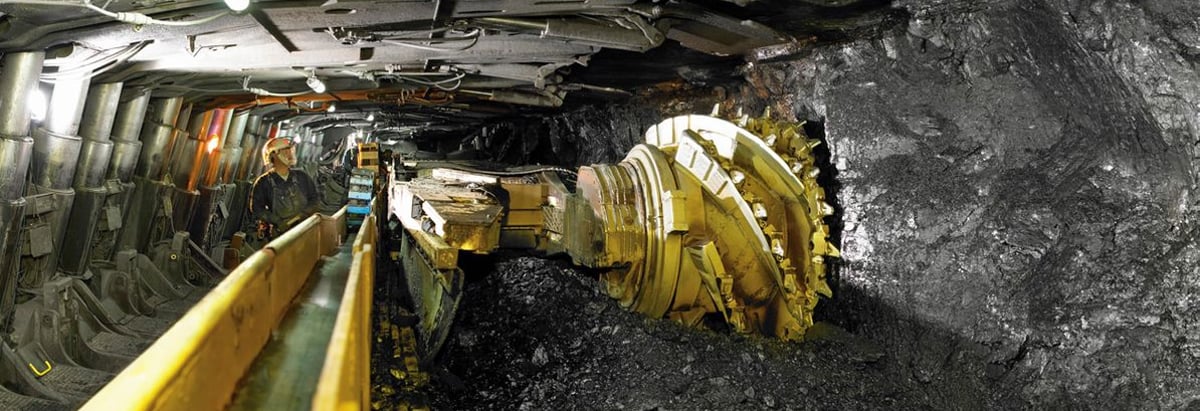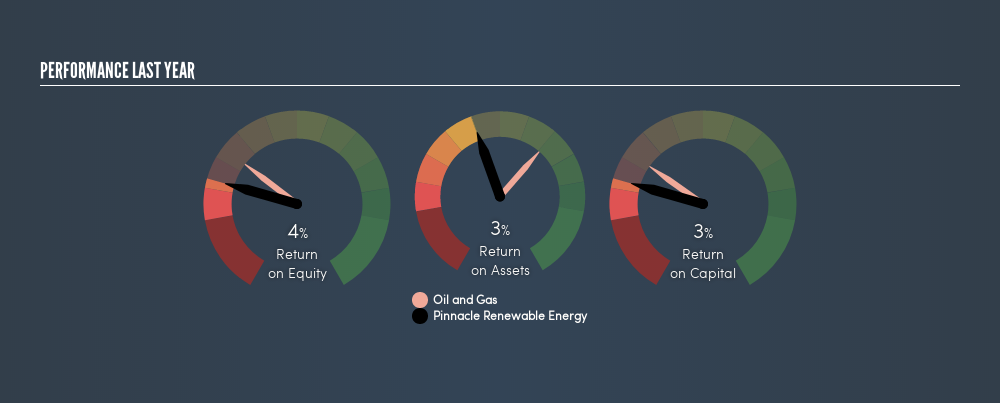Why We’re Not Keen On Pinnacle Renewable Energy Inc.’s (TSE:PL) 3.1% Return On Capital

Today we'll evaluate Pinnacle Renewable Energy Inc. (TSE:PL) to determine whether it could have potential as an investment idea. In particular, we'll consider its Return On Capital Employed (ROCE), as that can give us insight into how profitably the company is able to employ capital in its business.
Firstly, we'll go over how we calculate ROCE. Then we'll compare its ROCE to similar companies. And finally, we'll look at how its current liabilities are impacting its ROCE.
Return On Capital Employed (ROCE): What is it?
ROCE is a metric for evaluating how much pre-tax income (in percentage terms) a company earns on the capital invested in its business. In general, businesses with a higher ROCE are usually better quality. Ultimately, it is a useful but imperfect metric. Renowned investment researcher Michael Mauboussin has suggested that a high ROCE can indicate that 'one dollar invested in the company generates value of more than one dollar'.
So, How Do We Calculate ROCE?
The formula for calculating the return on capital employed is:
Return on Capital Employed = Earnings Before Interest and Tax (EBIT) ÷ (Total Assets - Current Liabilities)
Or for Pinnacle Renewable Energy:
0.031 = CA$18m ÷ (CA$644m - CA$75m) (Based on the trailing twelve months to March 2019.)
So, Pinnacle Renewable Energy has an ROCE of 3.1%.
Check out our latest analysis for Pinnacle Renewable Energy
Does Pinnacle Renewable Energy Have A Good ROCE?
One way to assess ROCE is to compare similar companies. We can see Pinnacle Renewable Energy's ROCE is meaningfully below the Oil and Gas industry average of 6.2%. This performance is not ideal, as it suggests the company may not be deploying its capital as effectively as some competitors. Putting aside Pinnacle Renewable Energy's performance relative to its industry, its ROCE in absolute terms is poor - considering the risk of owning stocks compared to government bonds. Readers may wish to look for more rewarding investments.
Pinnacle Renewable Energy's current ROCE of 3.1% is lower than its ROCE in the past, which was 5.4%, 3 years ago. This makes us wonder if the business is facing new challenges.

When considering this metric, keep in mind that it is backwards looking, and not necessarily predictive. ROCE can be misleading for companies in cyclical industries, with returns looking impressive during the boom times, but very weak during the busts. ROCE is, after all, simply a snap shot of a single year. Given the industry it operates in, Pinnacle Renewable Energy could be considered cyclical. Future performance is what matters, and you can see analyst predictions in our free report on analyst forecasts for the company.
How Pinnacle Renewable Energy's Current Liabilities Impact Its ROCE
Current liabilities are short term bills and invoices that need to be paid in 12 months or less. The ROCE equation subtracts current liabilities from capital employed, so a company with a lot of current liabilities appears to have less capital employed, and a higher ROCE than otherwise. To counter this, investors can check if a company has high current liabilities relative to total assets.
Pinnacle Renewable Energy has total assets of CA$644m and current liabilities of CA$75m. Therefore its current liabilities are equivalent to approximately 12% of its total assets. This is not a high level of current liabilities, which would not boost the ROCE by much.
The Bottom Line On Pinnacle Renewable Energy's ROCE
Pinnacle Renewable Energy has a poor ROCE, and there may be better investment prospects out there. You might be able to find a better investment than Pinnacle Renewable Energy. If you want a selection of possible winners, check out this free list of interesting companies that trade on a P/E below 20 (but have proven they can grow earnings).
If you are like me, then you will not want to miss this free list of growing companies that insiders are buying.
We aim to bring you long-term focused research analysis driven by fundamental data. Note that our analysis may not factor in the latest price-sensitive company announcements or qualitative material.
If you spot an error that warrants correction, please contact the editor at editorial-team@simplywallst.com. This article by Simply Wall St is general in nature. It does not constitute a recommendation to buy or sell any stock, and does not take account of your objectives, or your financial situation. Simply Wall St has no position in the stocks mentioned. Thank you for reading.
Market Insights
Community Narratives





